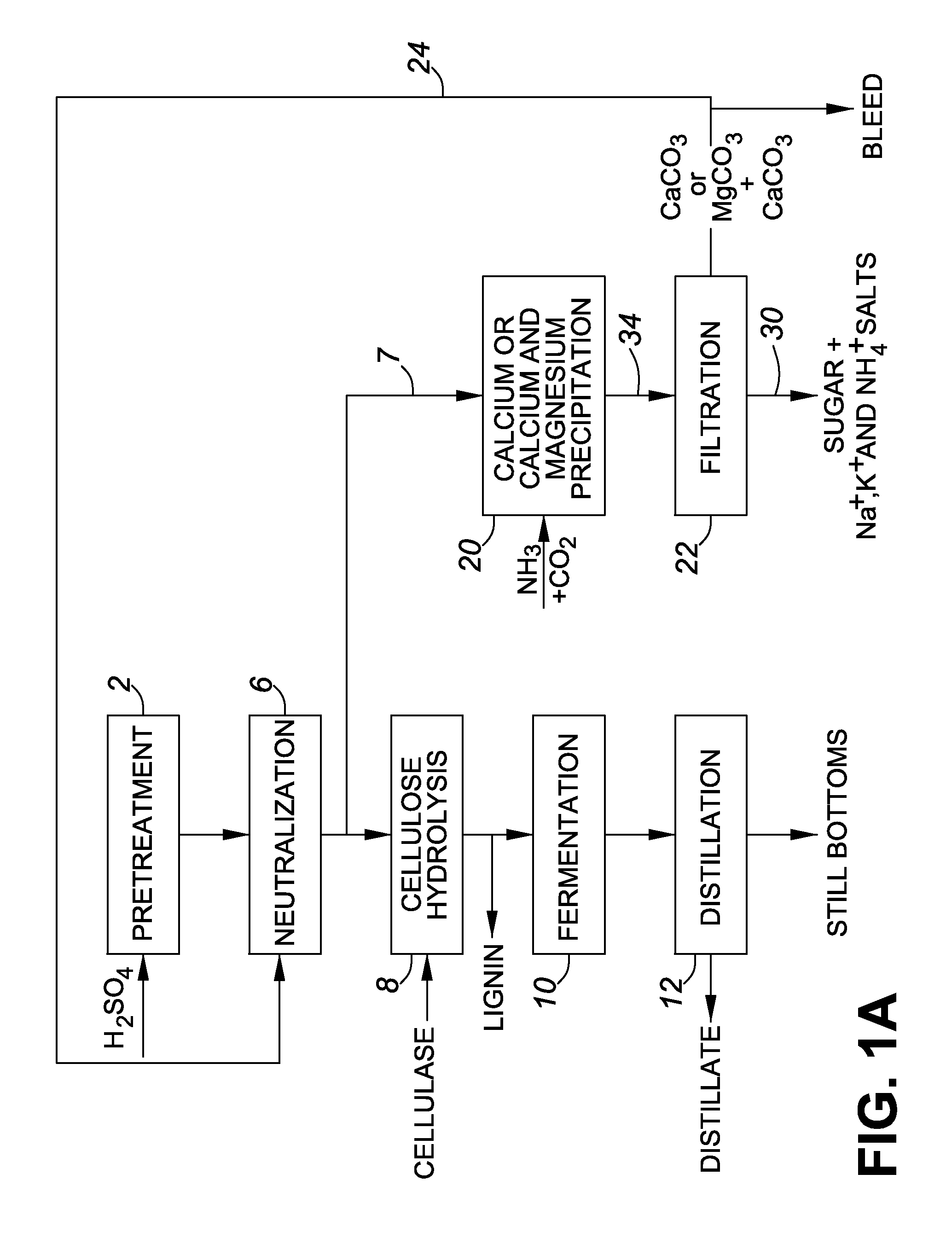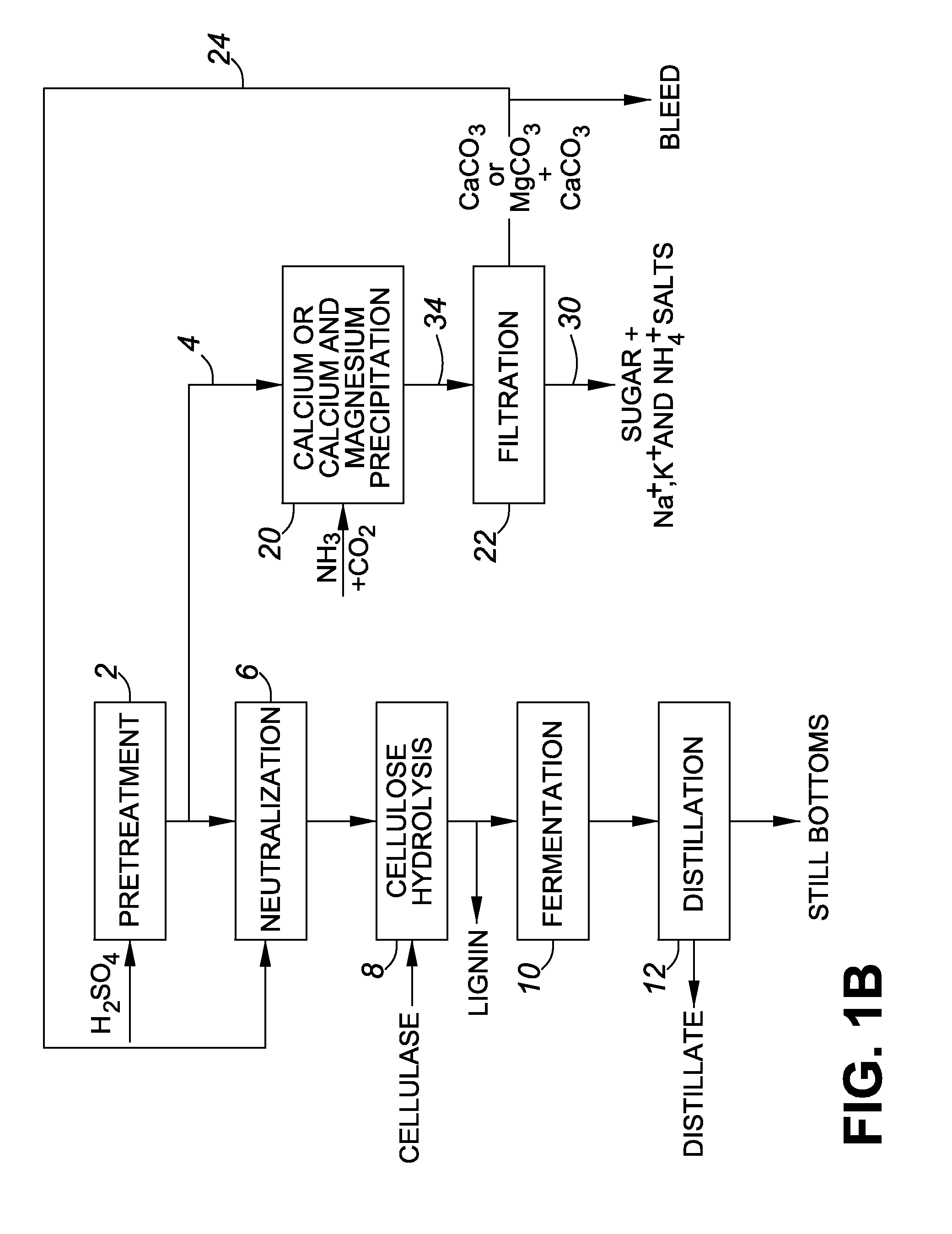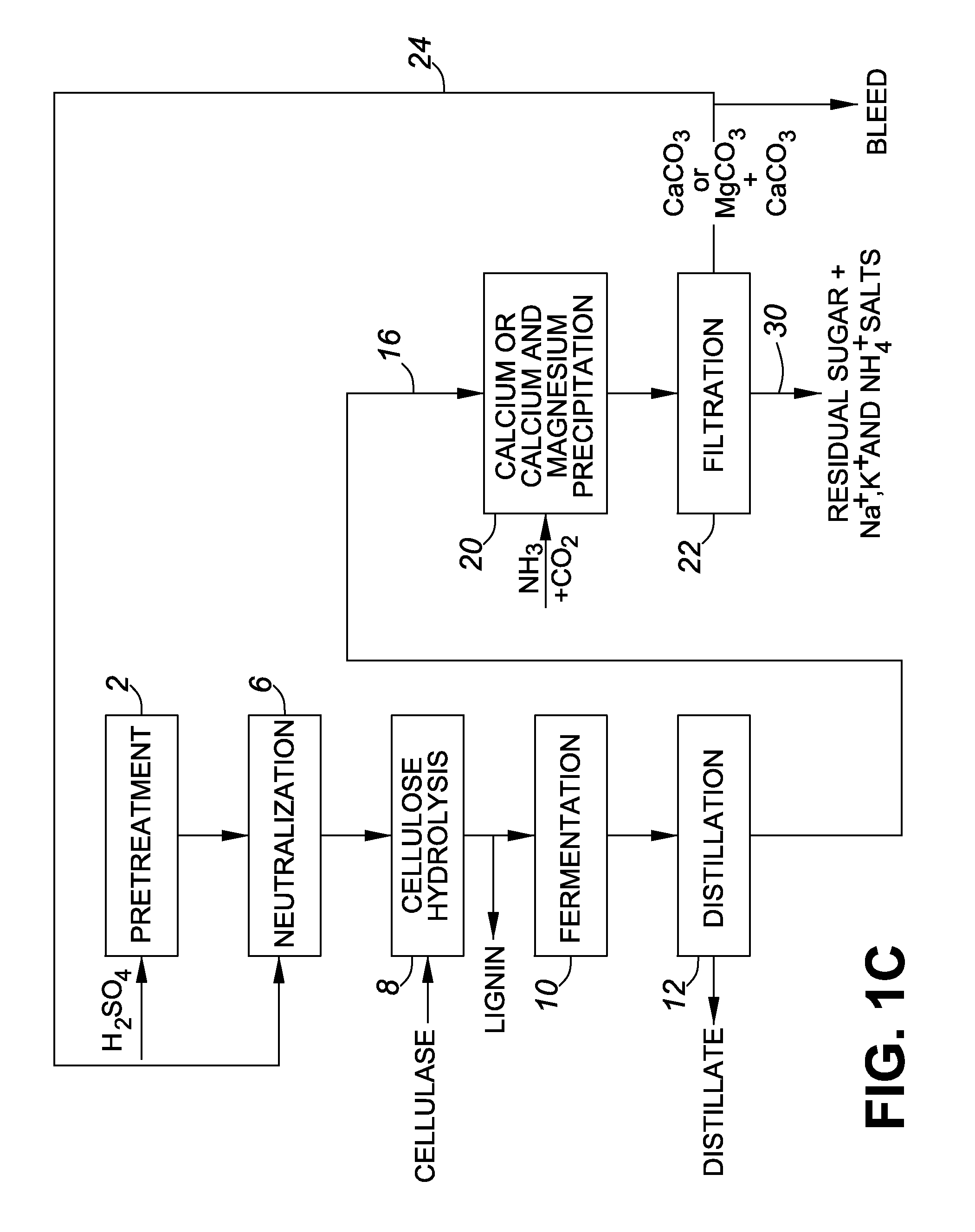Method for the production of glucose from lignocellulosic feedstocks
- Summary
- Abstract
- Description
- Claims
- Application Information
AI Technical Summary
Benefits of technology
Problems solved by technology
Method used
Image
Examples
example 1
Obtaining a Calcium- and Magnesium-Containing Sugar Stream from Calcium and Magnesium Contained in a Lignocellulosic Feedstock, Recovering the Calcium as Calcium Carbonate and Magnesium as Magnesium Carbonate, and Using the Calcium Carbonate and Magnesium Carbonate for pH Control in Cellulose Hydrolysis
[0148]Wheat straw (750 t / d, moisture-free basis) at 12% moisture content is received at the plant in bales. The straw contains 35.9% cellulose, 17.5% xylan, 22.1% lignin, numerous other organic compounds, and inorganic cations including, potassium at 1.1%, calcium at 0.13%, magnesium at 0.06%, and sodium at 0.01% (w / w). With reference to FIG. 1B, the bales are broken up and fed to a steam / dilute acid pretreatment system 2, as described by Foody, U.S. Pat. No. 4,461,648. After pretreatment 2, the slurry is sent over a decanter centrifuge to separate the sugar stream 4 from the pretreated solids. The sugar stream 4 has a flow rate of 121,000 L / h. The sugars in stream 4 are xylose (26 g / ...
example 2
Obtaining a Calcium- and Magnesium-Containing Sugar Stream and Still Bottoms stream from the calcium and magnesium contained in a lignocellulosic feedstock, Recovering the Calcium from Each Stream as Calcium Carbonate and Magnesium as Magnesium Carbonate, and Using the Calcium Carbonate and Magnesium Carbonate for pH Control in Cellulose Hydrolysis
[0152]Wheat straw (750 t / d, moisture-free basis) at 12% moisture content is received at the plant in bales. The straw contains 35.9% cellulose, 17.5% xylan, 22.1% lignin, numerous other organic compounds, and inorganic cations, including potassium at 1.1%, calcium at 0.13%, magnesium at 0.06%, and sodium at 0.01% (w / w). With reference to FIG. 1C, the bales are broken up and fed to a steam / dilute acid pretreatment system 2, as described by Foody, U.S. Pat. No. 4,461,648. The pretreated stream has a flow rate of 193,000 L / h and contains 9.5% undissolved solids. The soluble sugars in this stream are xylose (26 g / L), arabinose (2.5 g / L), gluco...
example 3
Obtaining a Calcium-Containing Sugar Stream and a Still Bottoms Stream from the Calcium Contained in a Lignocellulosic Feedstock, Recovering the Calcium from Each Stream as Calcium Carbonate, and Using the Calcium Carbonate for pH Control in Cellulose Hydrolysis
[0157]Wheat straw (750 t / d, moisture-free basis) at 12% moisture content is received at the plant in bales. The straw contains 35.9% cellulose, 17.5% xylan, 22.1% lignin, numerous other organic compounds, and inorganic cations, including potassium at 1.1%, calcium at 0.13%, and sodium at 0.01% (w / w). With reference to FIG. 1C, the bales are broken up and fed to a steam / dilute acid pretreatment system 2, as described by Foody, U.S. Pat. No. 4,461,648. The pretreated stream has a flow rate of 193,000 L / h and contains 9.5% undissolved solids. The soluble sugars in this stream are xylose (26 g / L), arabinose (2.5 g / L), glucose (7.4 g / L), galactose (1.7 g / L), and mannose (0.9 g / L). Other organic compounds in this stream include sol...
PUM
| Property | Measurement | Unit |
|---|---|---|
| Density | aaaaa | aaaaa |
| Density | aaaaa | aaaaa |
| Density | aaaaa | aaaaa |
Abstract
Description
Claims
Application Information
 Login to view more
Login to view more - R&D Engineer
- R&D Manager
- IP Professional
- Industry Leading Data Capabilities
- Powerful AI technology
- Patent DNA Extraction
Browse by: Latest US Patents, China's latest patents, Technical Efficacy Thesaurus, Application Domain, Technology Topic.
© 2024 PatSnap. All rights reserved.Legal|Privacy policy|Modern Slavery Act Transparency Statement|Sitemap



